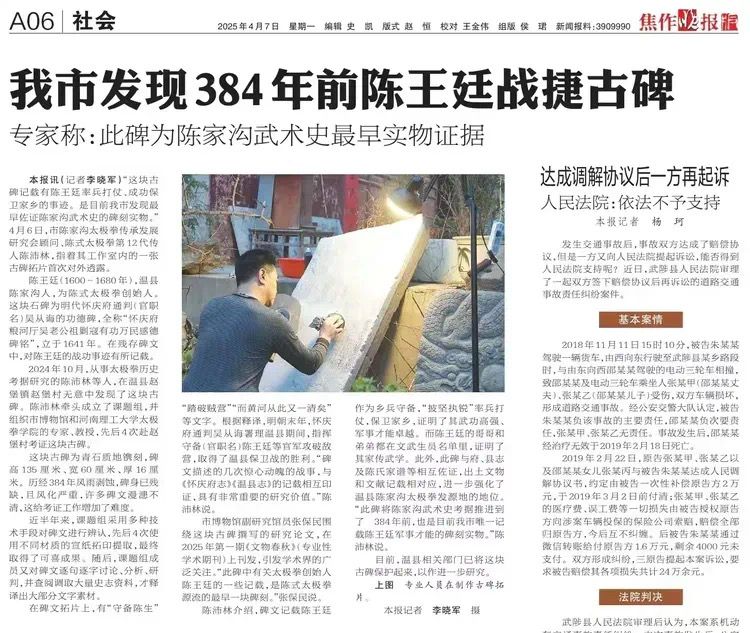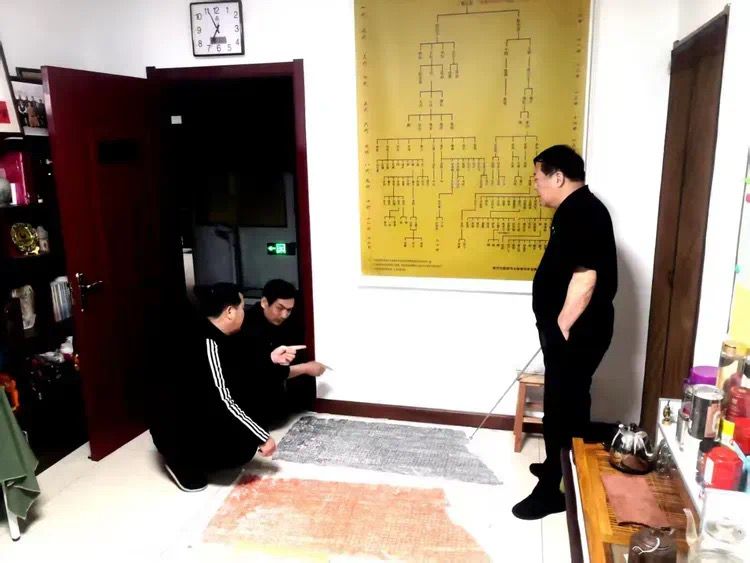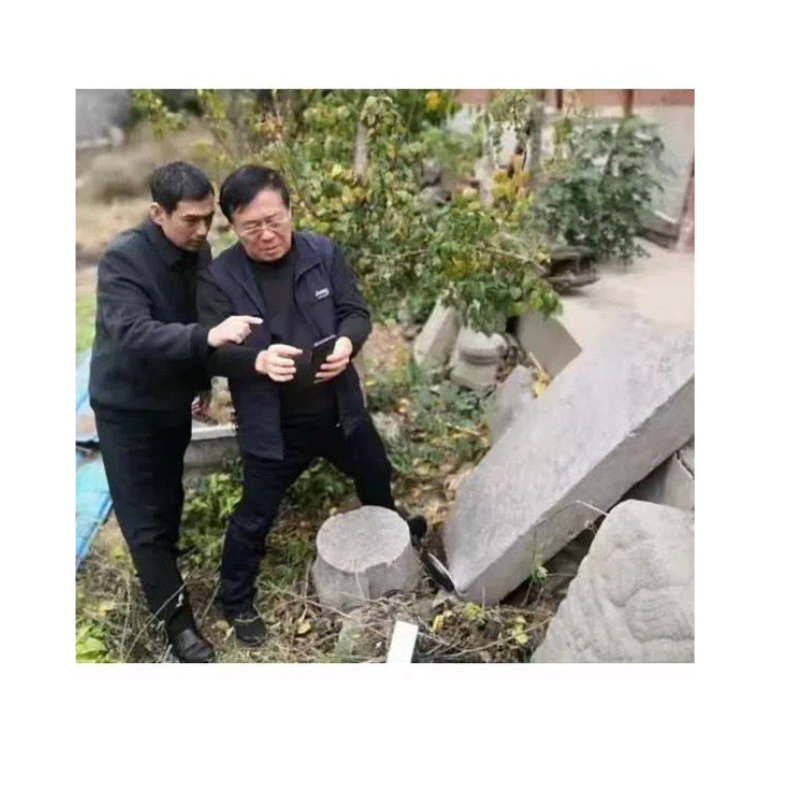Editor’s Note: According to the report below, the ancient stele from 1641—384 years ago—is currently the “earliest, only, and physical stone inscription” serving as solid evidence of the origins of Chinese martial arts and Taijiquan. (Reposted from Jiaozuo Daily)

“This ancient stele records Chen Wangting leading troops into battle and successfully defending his hometown. It is the earliest physical stone inscription discovered in our city that confirms the martial history of Chenjiagou.”
On April 6, Chen Peilin, advisor to the Chenjiagou Taijiquan Inheritance and Development Research Association and 12th-generation inheritor of Chen-style Taijiquan, revealed this for the first time, pointing to a rubbing of the stele in his studio.
Chen Wangting (1600–1680), a native of Chenjiagou in Wen County, is the founder of Chen-style Taijiquan. The stele is a merit monument from the Ming Dynasty, erected by Wu Conghui, then Vice Prefect of Huaiqing Prefecture. Its full title is “Merit Stele of Grandfather Wu of the Lianghe Office of Huaiqing Prefecture, for Suppressing Bandits and Gaining the People’s Gratitude”, and it was established in 1641. The surviving inscription includes references to Chen Wangting’s military achievements.
In October 2024, Chen Peilin and other Taijiquan historians accidentally discovered the stele in Zhaobao Village, Zhaobao Town, Wen County. Chen formed a research team and collaborated with experts from the city museum and the Taijiquan Institute of Henan Polytechnic University. They visited Zhaobao Village four times to verify the stele.

The stele is carved from bluestone and measures 135 cm tall, 60 cm wide, and 16 cm thick. After 384 years of exposure to the elements, the stone has become damaged and heavily weathered, with many characters hard to decipher, making research challenging.
Over the past six months, the team used various technical methods to interpret the inscription, creating rubbings on four different types of Xuan paper. This eventually yielded positive results. The team then analyzed and discussed the text character by character and referenced large volumes of historical records to interpret most of the inscription.

In the rubbing, phrases like “Commander Chen,” “crushed the enemy camp,” and “the Yellow River has been cleansed once again” are visible. According to their translation, in the late Ming Dynasty, Wu Conghui, while acting as county magistrate of Wen, led government troops along with Commander Chen Wangting to defeat enemy forces and secure a victory in defending Wen County. “The battles described in the stele align with accounts from Huaiqing Prefecture Annals and Wen County Annals, which gives the discovery great historical value,” said Chen Peilin.
Zhang Baomin, associate researcher at the city museum, published an academic paper on the stele in the first 2025 issue of Cultural Relics & History, a professional journal, drawing widespread attention from the academic community. “This stele contains the earliest known inscriptions about Chen Wangting, founder of Chen-style Taijiquan,” said Zhang.
Chen Peilin explained that the inscription describes Chen Wangting as a local commander who “wore armor and wielded sharp weapons” to lead troops in battle and defend his homeland, proving his exceptional martial skills and military talent. Moreover, his brothers are listed among scholarly and martial officials, confirming a family tradition in martial arts. This stele, together with regional chronicles and the Chen family genealogy, and in alignment with archaeological and documentary evidence, further reinforces Chenjiagou’s status as the birthplace of Taijiquan. “This stele pushes back the documented martial history of Chenjiagou by 384 years and is currently the only known stone inscription recording Chen Wangting’s military prowess,” Chen emphasized.

The local authorities of Wen County have now placed the stele under protection for further study.




